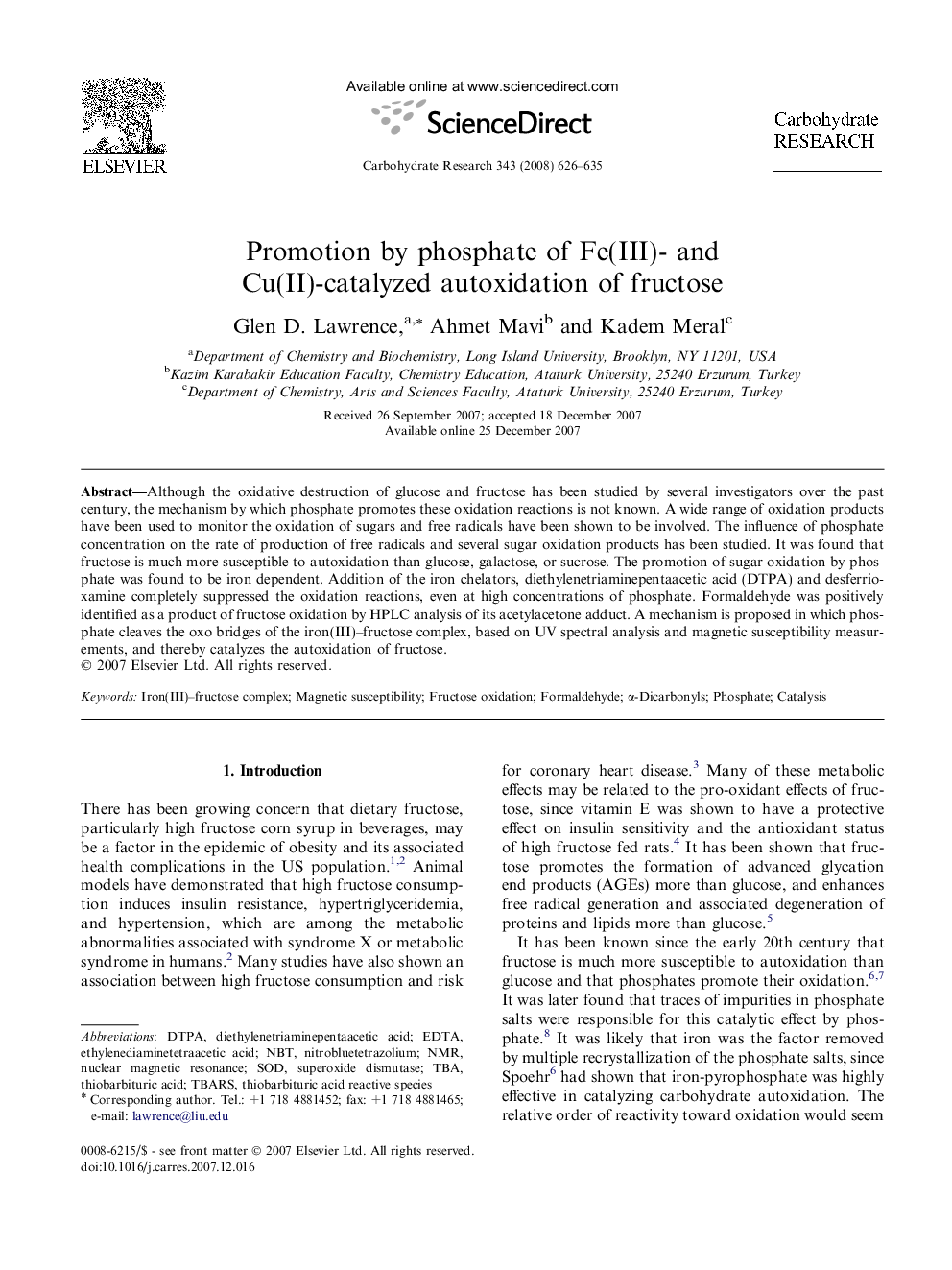| Article ID | Journal | Published Year | Pages | File Type |
|---|---|---|---|---|
| 1390742 | Carbohydrate Research | 2008 | 10 Pages |
Although the oxidative destruction of glucose and fructose has been studied by several investigators over the past century, the mechanism by which phosphate promotes these oxidation reactions is not known. A wide range of oxidation products have been used to monitor the oxidation of sugars and free radicals have been shown to be involved. The influence of phosphate concentration on the rate of production of free radicals and several sugar oxidation products has been studied. It was found that fructose is much more susceptible to autoxidation than glucose, galactose, or sucrose. The promotion of sugar oxidation by phosphate was found to be iron dependent. Addition of the iron chelators, diethylenetriaminepentaacetic acid (DTPA) and desferrioxamine completely suppressed the oxidation reactions, even at high concentrations of phosphate. Formaldehyde was positively identified as a product of fructose oxidation by HPLC analysis of its acetylacetone adduct. A mechanism is proposed in which phosphate cleaves the oxo bridges of the iron(III)–fructose complex, based on UV spectral analysis and magnetic susceptibility measurements, and thereby catalyzes the autoxidation of fructose.
Graphical abstractFigure optionsDownload full-size imageDownload as PowerPoint slide
